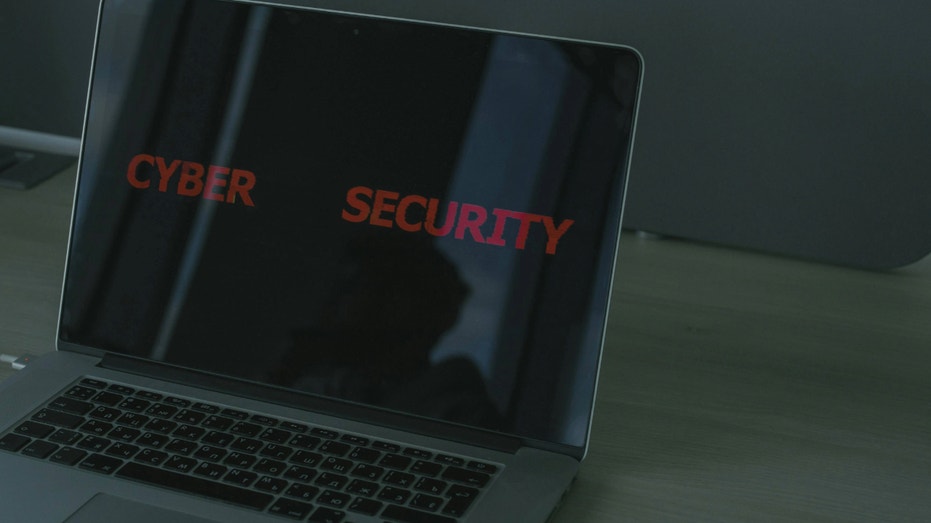Have you ever felt a little uneasy while browsing the internet, wondering who might be watching your online activities?
Well, let me introduce you to a handy tool that can put your mind at ease: the virtual private network, or VPN.
Whether you're working from home, streaming your favorite shows or just exploring the web, a VPN can help ensure that your data stays secure and your privacy intact. So, let’s dive into why having a VPN at home is a smart move.
GET SECURITY ALERTS, EXPERT TIPS — SIGN UP FOR KURT’S NEWSLETTER — THE CYBERGUY REPORT HERE
A virtual private network, or VPN, encrypts your internet traffic and reroutes it through a server in a different location than your own. VPNs make it appear that you are connecting to the internet from whichever location the server is hosted in rather than your actual location.
When you first connect to a network using a VPN, your device will establish a secure connection with the VPN server, and your device's IP address will appear as the VPN server, meaning that only your internet service provider will see that you're connecting to a VPN server. Normally, when you connect to a website, the website or any online services you visit can see your device's technical information, including location-sensitive data such as IP addresses.
THE BEST VPNS FOR BROWSING THE WEB IN 2024
While your home internet connection is more secure than a public Wi-Fi connection, VPNs still provide a greater sense of privacy and access to content that might be restricted due to location. Here are 10 reasons I have for getting a home VPN.
Online communication can be hit or miss when it comes to security. Some messaging services, such as Whatsapp, use end-to-end device encryption, which helps keep your messages secure, but other messaging services, such as Skype, don't use end-to-end encryption. If you use a VPN with any communication apps, then all your connection and messaging data between your device and the VPN server is fully encrypted.
Online content and services like Netflix are restricted to specific geographic regions. This content can range from news websites to video streaming platforms and social media apps. Using a VPN at home can appear to be using the internet from another location, allowing you to access restricted services.
Sometimes, an internet service provider (ISP) will slow down bandwidth or certain online activities. One of the most common reasons networks do this is to manage network congestion, especially during peak hours. You might notice that your home internet connection slows down at night, when everyone is home from work, or it might slow down when summer vacation starts. Using a VPN will prevent your service provider from identifying the type of web content you are accessing, making it impossible for your ISP to slow down your traffic.
A VPN also keeps your internet activity private from Wi-Fi network admins, who, if technically skilled enough, can figure out which websites you've visited. If you're worried about the Wi-Fi admin of your office, hotel, school or other public place having access to your browsing history, a VPN is the perfect solution for you. When it comes to your own home Wi-Fi network, a VPN will keep your browsing history private from other household members.
WHAT IS ARTIFICIAL INTELLIGENCE (AI)?
Hackers deploy large-scale cyberattacks to observe network activity and steal your information. These attacks are particularly prevalent on public Wi-Fi networks, which often have minimal security measures, but they can also target secured networks. Using a VPN can significantly enhance your security by providing encryption for your internet traffic, making it difficult for hackers to intercept and read your data. This encryption is especially crucial when using public Wi-Fi, as it secures your information from potential eavesdroppers.
Additionally, a VPN masks your real IP address with that of the VPN server, helping to protect your identity online and making it harder for attackers to target you directly. However, it is essential to understand that while a VPN adds a layer of security, it is not a comprehensive solution against all cyber threats.
A VPN does not prevent malware infections or phishing attacks, so you must still employ strong antivirus software and exercise caution when clicking on links or downloading files. Get my picks for the best 2024 antivirus protection winners for your Windows, Mac, Android and iOS devices.
Furthermore, not all VPNs are created equal; some may have vulnerabilities or questionable privacy practices. It is crucial to choose a reputable provider that uses strong encryption and has a clear no-logging policy.
There's a myriad of reasons, ranging from political to economic, that countries use to justify censoring certain apps and websites. It can be incredibly frustrating for citizens and anyone traveling to that country to lose access to email, social media, news websites and other tools that keep us connected to the world around us. I've used VPNs extensively while traveling to ensure that I can always view my most important websites, no matter where I actually am. As I've mentioned, a VPN can mask your IP address and make it appear as traffic from a different country, allowing you to bypass online geographic restrictions.
One of the best reasons to have a VPN at home is that it can help you save money and find better deals while online shopping. Some online retailers change their prices depending on users' locations. However, when using a VPN while shopping for plane tickets, hotels or gifts, it's possible to find cheaper prices just by changing your location.
It's no longer the work of sci-fi. We do know that governments, nearly all of them, surveil their citizens. A VPN will add a layer of privacy, making it significantly more difficult for governments to detect your web traffic. Even if you feel that you have nothing to hide, online privacy is something you should feel free to exercise.
Much like governments, your ISP can surveil your online activity with ease. While most ISPs claim that they don't sell your browsing data, they are often allowed through contracts with marketing agencies to give your data away for free to advertise to you. The simplest way to hide your online activity from your ISP is to use a VPN. When using a VPN, your ISP won't be able to see which websites you visit or which apps you use.
HOW VPNS SHIELD YOUR IDENTITY AND SECURE YOUR FINANCIAL TRANSACTIONS FROM THEFT
While it may seem counterintuitive, a VPN can offer faster connection speeds for online gaming. It can also help prevent your ISP from throttling bandwidth directly from gaming servers. By changing your VPN's location, you can connect to a server closer to your gaming server, which will give you better latency. This is also called ping, which determines how fast the server responds to your inputs.
CAN YOU BE TRACKED WHEN USING A VPN?
To fully leverage the benefits of your VPN and enhance your online security, consider these important tips that will help protect your personal information and ensure safe browsing.
1. Choose a reliable VPN: Select a reputable VPN service with strong encryption protocols. For best VPN software, see my expert review of the best VPNs for browsing the web privately on your Windows, Mac, Android and iOS devices.
2. Always use VPN on public Wi-Fi: Never access financial accounts on public networks without activating your VPN first.
3. Enable two-factor authentication (2FA): Add an extra layer of security to your accounts by enabling 2FA.
GET FOX BUSINESS ON THE GO BY CLICKING HERE
4. Use strong, unique passwords: Create complex passwords for each of your accounts and consider using a password manager. Consider using a password manager to generate and store complex passwords.
5. Regularly monitor your accounts: Check your retirement accounts frequently for any suspicious activity.
6. Keep software updated: Ensure your devices and apps are always up-to-date with the latest security patches.
7. Be cautious of phishing scams while using a VPN: Even with a VPN securing your connection, phishing scams remain a significant threat to your online safety. These scams often use deceptive emails or links to steal sensitive information like passwords or credit card numbers. To protect yourself, combine the use of a VPN with strong antivirus software that detects and blocks phishing attempts. Additionally, always scrutinize unsolicited emails, avoid clicking on suspicious links, and never provide personal information without verifying the source. For the best protection, check out my expert reviews of the top 2024 antivirus solutions for your Windows, Mac, Android and iOS devices. Together with a VPN, this approach helps keep your personal information and digital assets safe.
If you want to start taking your online privacy seriously, it's worth getting a VPN. There are a wide range of options available. You can pick up a router with a VPN or install a software VPN on your devices. I prefer to have a VPN on my laptop and smartphone, and I especially find it useful when traveling internationally.
Do you have a reason for using a VPN we didn't feature in the list? Let us know by writing us at Cyberguy.com/Contact
For more of my tech tips and security alerts, subscribe to my free CyberGuy Report Newsletter by heading to Cyberguy.com/Newsletter
Ask Kurt a question or let us know what stories you'd like us to cover.
Follow Kurt on his social channels:
Answers to the most-asked CyberGuy questions:
New from Kurt:
Copyright 2024 CyberGuy.com. All rights reserved.


